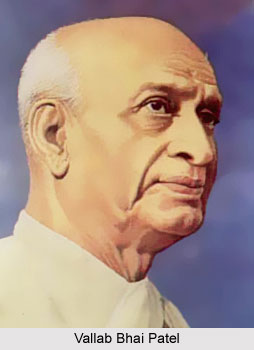 The Royal Indian Navy Mutiny or the Bombay Mutiny was the revolt of the Indian sailors. The sailors who belonged to the Royal Indian Navy on board ship and shore establishments at Bombay harbour went for a strike and organised a mutiny on 18th February 1946. The whole mutiny involved 78 ships, 20 shore establishments and 20,000 sailors. This revolt subsequently came to be known as the RIN revolt. It started as a protest against their general conditions.
The Royal Indian Navy Mutiny or the Bombay Mutiny was the revolt of the Indian sailors. The sailors who belonged to the Royal Indian Navy on board ship and shore establishments at Bombay harbour went for a strike and organised a mutiny on 18th February 1946. The whole mutiny involved 78 ships, 20 shore establishments and 20,000 sailors. This revolt subsequently came to be known as the RIN revolt. It started as a protest against their general conditions.
The immediate reason for the outbreak of the mutiny was their pay and food. In addition to that there were more elementary matters such as racist behaviour by Royal Navy personnel towards Indian sailors, and disciplinary measures taken against the sailors who demonstrated nationalist sympathy. The R.I.N revolt started electing a Naval Central Strike committee, Signalman M.S Khan and Telegraphist Madan Singh were elected as the President and Vice-President respectively.
The Royal Indian Navy Mutiny was widely supported by the Indian population. The one day strike spread to other cities from Bombay and the Royal Indian Air Force and local police forces also joined this mutiny. Furthermore, in Madras and Pune, the British garrisons had to face revolts within the ranks of the Indian Army. The mutinying ships hoisted three flags which were tied together those of the Congress, Muslim League, and the Red Flag of the Communist Party of India (CPI). The flags signified the unity and demarginalisation of communal issues among the mutineers.
The Royal Indian Navy Mutiny was called off following a meeting between the President of the Naval Central Strike Committee (NCSC), M. S. Khan, and Vallab Bhai Patel of the Congress. Vallab Bhai Patel was sent to Bombay to settle the crisis. Thus, Patel put forth a statement calling on the strikers to end their action. Mohammed Ali Jinnah on behalf of the Muslim League also supported the statement of Patel. As a result, the strike ended and in spite of assurances of the good services there were widespread arrests of the Congress and the Muslim League. Furthermore, there were incidents of courts martial and large scale dismissals from the service. However, after independence none of the dismissed returned into either of the Indian or Pakistani navies.



















